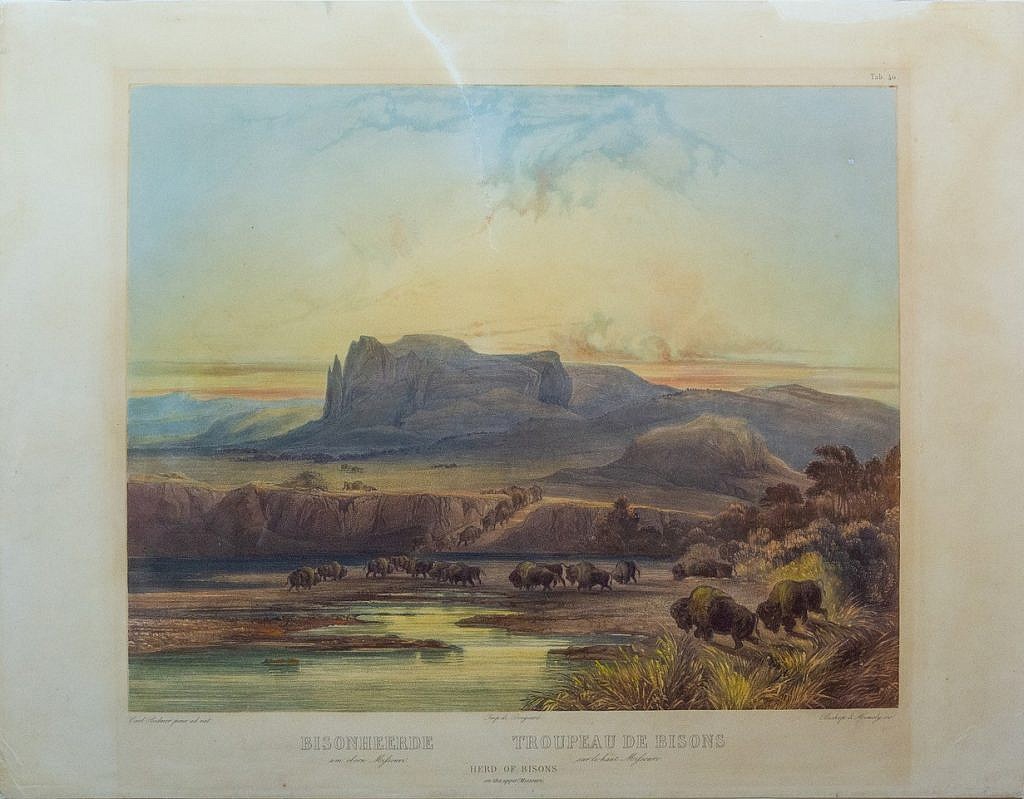
by Brooke Chilvers
I’m not sure the computer screen can replace live attendance at a once-in-a-lifetime art exhibition, such as the Karl Bodmer show at the MET. But for now, I’m willing to try.
When I was young in Paris and London, there was rarely a crowd at any museum. I had entire rooms at the Louvre and British Museum nearly to myself. But by the mid-1990s, museum attendance everywhere exploded with blockbuster exhibitions such as Origins of Impressionism (1995) and Painters in Paris (2001), which each generated nearly 800,000 visitors to the MET alone.
With many museums around the world shuttered since March 2020, it’s almost impossible to think that, in 2019, more than 1.1 million Brazilians attended the traveling exhibition of Chinese dissident and artist Ai Weiwei – 9,172 a day in Rio de Janeiro! Even more Brazilians – 11,380 per day – flocked to the shows featuring the storyboards and illustrations for DreamWorks’ productions of Shrek, Madagascar, and Kung Fu Panda.
That year, Tokyo’s exhibition on Edvard Munch brought in 8,913 attendees per day. And in Paris, the Tutankhamun show generated over 1.4 million overall.
Art Newspaper reports that in 2019 the 100 most popular art museums in the world welcomed some 230 million visitors. In Pandemic Year 2020, this figure dropped to 54 million – an incredible 77% decline – even with some museums still operating at 20% to 30% capacity.

In view of today’s seemingly insurmountable health crisis, who knows what – and when – the “new normal” for our cultural life will be.
In the meantime, lacking the willpower to fly to New York to attend the MET’s exhibition, Karl Bodmer’s North American Indian Portraits, my art-hungry heart decided to see whether an online experience would satisfy me. The Swiss-born Bodmer (1809–1893) had accompanied German naturalist and explorer Alexander Philip Maximilian, Prince zu Wied-Neuwied (1782–1867), on his two-year journey documenting the flora, fauna, and peoples of the Northern Plains.
Starting out from Boston in 1832, from St. Louis their party travelled up the Missouri River by steamboat and keelboat as far northwest as Fort McKenzie, MT. Potential hostilities with the Blackfoot stopped them from reaching the Rockies.
The 23-year-old Bodmer was tasked with creating realistic and detailed images to accompany the Prince’s texts on the customs, ceremonies, and physical appearance of the some 20 indigenous tribes they encountered, including the Mandan and Hidatsa, whose traditional lifestyles were quickly disappearing. In 1837, a smallpox epidemic decimated their numbers.
The result of the expedition was the two-volume Travels in the Interior of North America (1839–1841).
The Internet took me to Arader Galleries’ online “show” of several dozen of Bodmer’s spectacular hand-colored aquatint engravings, out of the hundreds of sketches and 81 watercolors he turned into prints over four years in Paris. In addition to depicting warriors, medicine men, and chiefs dressed in their finest regalia, such as Sih-Chida and Mahchsi-Karehde, Arader’s Bison Dance of the Mandan Indians and Funeral Scaffold of a Sioux Chief are especially fascinating and colorful. Herds of Bison and Camp of the Gros Ventres of the Prairies remind us that Bodmer was a landscape artist at heart. Google: Arader Galleries Karl Bodmer.
Arader’s website led me to a link to a 20-minute online “visit,” conducted by curator Thayer Tolles of The American Wing of the MET, to their Bodmer exhibition that features 35 watercolors on loan from the Joslyn Art Museum. If, like me, you cannot see the show, which runs from April 5 to July 5, 2021, go to YouTube and search for Karl Bodmer: North American Portraits/Insider Insights.
YouTube uncovered a pleasant and informative 10-minute discussion from the National Museum of Wildlife Art’s 2010 exhibition, Karl Bodmer & Travels to the Interior of North America, which in turn led me to their amusing four-part one-man show, Karl Bodmer Live! which is great to watch with the kids.
I finished my Bodmer “fix” with a one-minute stream of his wonderful watercolors on the website Art Treasures of Nebraska.
Did online viewing replace a trip to the museum? No… but good enough for now.
______________________________________________________________________________
Brooke Chilvers also recommends the two fine volumes, Karl Bodmer’s America (1984) and Karl Bodmer’s North American Prints (2004), both published by Joslyn Art Museum and University of Nebraska Press.
